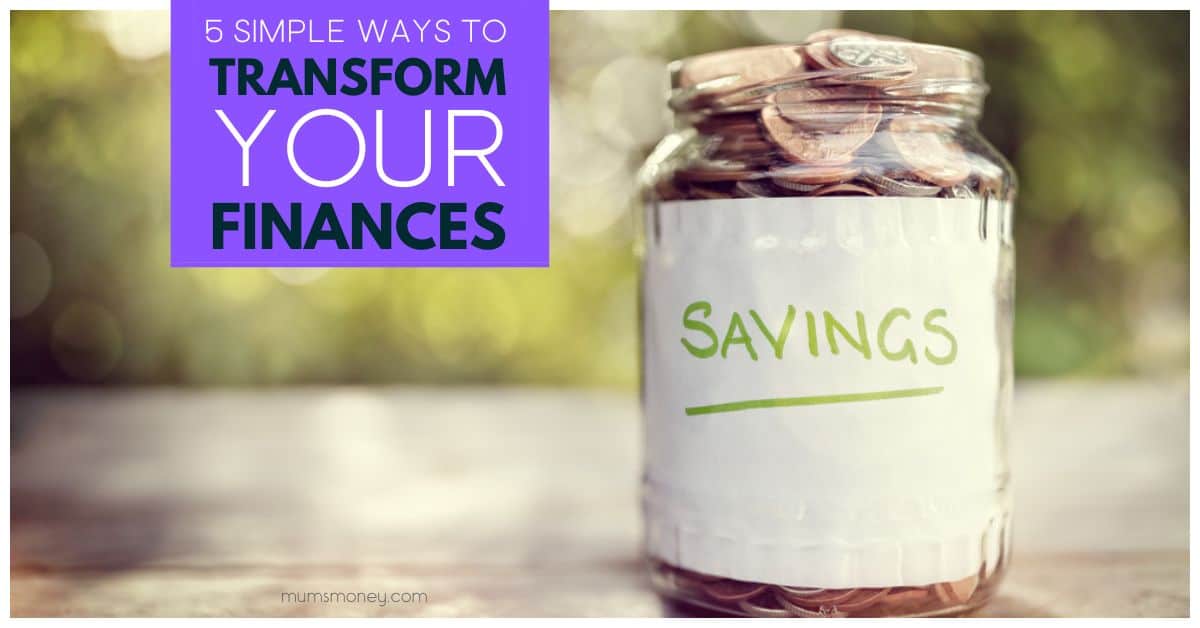
If you’ve decided this will be the year you transform your finances, hats off to you.
It can be a daunting task, but it’s not impossible to get your money back on track.
To help you get started (often the most difficult part) below is a list of steps I would follow if I were starting again from scratch.
1. Write a Budget Around Your Expenses
The big turnaround for my finances was budgeting around my core expenses, not what I had coming in.
It’s hard to wrap your head around at first, but once you change this thinking, you’ll be better equipped to live frugally no matter your income.
2. Build an Emergency Fund
If you don’t already have savings, an emergency fund should be your first priority.
Don’t even think about your debt until you have at least $1000 in the bank.
Why, you ask? Well, the reason most people have debt is due to unexpected expenses.
Even with the best intentions, if you don’t have the means to cover an emergency, you’ll head straight back into debt.
One of the best ways to make extra money is by taking online surveys for cash.
Both Swagbucks and Survey Junkie offer frequent, well-paid surveys online. Swagbucks also pays you to do simple things like search the net and play games online. Join Swagbucks today and get $5 FREE!
For more ways to save money, I’ve written a post about how to save your first $1000.
3. Kill Your Debt
Once you’ve written a budget and saved (at least) $1000 it’s time to make a plan to clear your debt.
The list below is tailored to credit card debt, but you can tweak it to suit any type of debt.
Here’s how I like to deal with debt:
- Find a balance transfer offer for as close to 0% and transfer your highest-interest-bearing card there.
- Cut up the card so you can’t rack up any further debt on it.
- Set an automatic transfer for the amount you set aside in your budget.
- Find out how frequently the card issuer allows you to reduce the credit limit. If possible reduce your credit limit every time to pay back $100. For example, if you have a $3000 limit on your card and you pay back $100 you now owe $2900. Call your card issuer and ask them to reduce your credit limit to $2900. Note: this technique might affect your credit rating, but it’s exactly what I did and I have had no issue securing lending to buy an investment property or getting insurance, so it hasn’t hurt me. Read more about it here
- Rinse and repeat
Another tactic that cured my debt addiction was to pay my debt in cash at the bank.
It hurts so much to hand over actual cash.
But it helped confirm that credit card debt was real money, not some never-ending slush fund created solely for my consumerism.
You can read more about how I changed my credit card maxing ways here.
4. Get Educated
Want to learn more about money?
Well, do I have a list for you.
This list of the best personal finance books for beginners includes books that are easy to read and interesting, no boring analysis and jargon here, I promise.
I’ve read them all and would recommend them to my loved ones.
5. Set an Audacious Goal
Write a big, hairy goal. Something out of your wildest dreams.
Take a year off to build an online business.
Travel around the world for six months.
Start a profitable blog.
Become a stay at home parent.
BIG DREAMS, PEOPLE.
Stick your goal on the refrigerator door.
Debt repayment and ultra-frugal living can really suck sometimes, so having a visual representation of your goal in a place you visit often can help to keep you motivated in the tough times.
With dedication and a few simple tweaks, this year can be the best year of your financial life.
It all starts with budgeting to live within your means.
Then by saving an emergency fund and making a get-out-of-debt plan, you’ll be well prepared when the sh*t hits the fan.
As you go through this process, you’ll slowly see your mindset towards money change, and perhaps you’ll feel as I did when I was going through this; when you know how to use it, money is a powerful tool, not something to be feared.
I wish you all the best with it.




Great ideas, love the idea for a big goal.
Great advice. I you have these in the exact order I would follow as well. I think so many make the mistake of putting the emergency fund at the bottom of the list, when it should be near the top if you want to stay out of debt. When I don’t have an emergency fund and something happened, I was left resorting to the credit card. Having an emergency fund has been the easiest way to stay out of debt.
Agree, that’s such a good idea about the $1000 first, I’ve recently sorted a balance transfer to a 0%, and I had on my to-do to go get a pin loaded- read this and thought no, that’s the whole point, pay it off and don’t make it accessible.(Not sure I can cut it up just yet!).
Thanks!
Great Post. Taking care of debt is the key to transforming the budget.
Thanks.
You need to be careful with number 3 if you’re going to need credit for a motgage or car purchase. Every time you reduce your credit limit, you are increasing your debt to credit ratio which seriously hurts your credit score. Since you’ve already made steps not to use the credit, not reducing the limit as you pay it down will actually boost your credit score. Keep in mind credit scores can impact insurance rates and employment,
For sure, Mary. The technique’s not for everyone, but it certainly helped me get out of debt (and stay there!) and I was able to secure many mortgages to buy investment property after becoming debt free so it didn’t hurt me at all. I’ve gone more in-depth on how I cleared credit card debt here.